"An Artist Flowering in Her Nineties" and ordinary things as signs for us
The luminosity of age and womanhood with Helen Frankenthaler, Sister Corita Kent, Georgia O'Keeffe, and Anna Karina.
❥This email may be truncated in your inbox. To make sure you are reading the entire post, please move yourself along to a web browser!
All words here are my own, unless otherwise stated. More from me + Absolument can be found in these places:
Website | Instagram | Book Recs. Merci, thank you for reading!
An Artist Flowering in Her Nineties
A few nights ago, I was reading this writing by Rebecca Mead for The New Yorker on my patio, curled up in an enveloping lounge chair. It was inching toward 9pm and I was torquing my body and squinting my eyes at the page while trying to take advantage of the last possible moments of daylight. Stubbornly, I felt too immersed to leave my spot! I wanted to finish reading this addictive article outside, enjoying the soft feeling of the summer’s night. Isabella Ducrot, the “flowering artist,” had many wise thoughts about her age, love, family, fleeting emotions, Italy, and becoming an artist late in life.
Please, give it a read. You’ll likely find yourself wanting to befriend this 93-year-old woman while drinking “porcelain cups of scented tea or chilled champagne in pretty colored glasses” at her Roman home. She’ll help change your life.
Memorable bits from the article:
For more than two decades, Isabella Ducrot, an artist who was born in Naples in 1931, has lived in an apartment on the top floor of the Palazzo Doria Pamphilj, in the center of Rome. When I knocked on her door for the first time, this past spring, she greeted me with an emphatic pronouncement in English: “I must tell you immediately that I have never been so happy in my life!”
We tend to assign to the elderly—and especially to elderly women—the vague, and often diminishing, attribute of wisdom, thereby suggesting that their own creative, intellectual, or erotic evolution has come to an end, and that their sole remaining role is to give advice to others. Ducrot’s work and life offer an alternative possibility: that an individual might remain wide-eyed and open to experience—in an enduring state of naïveté, and with a capacity to be joyfully surprised—until the very end.
“I am terrified also, naturally, because friends of mine, old people, are dying,” she said. “But happiness is another thing. I think I am helped by the words that come to me—words are more generous with me now.”
Every morning, between eight-thirty and ten-thirty, Ducrot writes before descending to her studio. “During the day, I am absolutely normal,” she said. “But in the morning I write very intelligent things.”
We also spent many hours alone, during which Ducrot was irreverent, confiding, and emotional, our conversation interrupted only by the occasional wailing of one of her cats, Evita—a diminutive, ancient creature who stiffly roamed the apartment as if lost. “She is the same age as me,” Ducrot said, in a low voice. The cat sometimes unleashed a penetrating yowl that reminded Ducrot of her husband’s final days. “He approached death furiously,” she said. Having witnessed that, she was bracing for similar anguish herself. “I will be more near to Vicky,” she said, explaining that she didn’t mean this in a supernatural way—although she was devoutly Catholic in her girlhood, she no longer believes in an afterlife. She meant that, after a long life with Vicky, she would feel a fitting sympathy with him at the end. “Love is productivo—love produces love,” she said.
Ducrot told me that she enjoyed her children, but also cherished her life apart from them. “The reality is that I preferred to be with my friends than with them,” she explained. “It was not my maximum amusement to be with them.”
“I think life, for women, begins at sixty,” she told me. “Because then we begin to be free.”
“You came at a moment of my life when there is not so much more to say, and not so much more to feel,” she noted. “So, every day from tomorrow, I cannot say another life begins—no, certainly not. But, in a way, perhaps another meaning of the life is beginning.”
“We don’t know what we are going to do in life. Perhaps you will become a dancer, or leave your family, or go off with a man from South Africa”—not exactly conventional wisdom from an elder. Now, she told me, she believed it was possible to fall in love even as one was dying.
Being very old had heightened her sense of the present. “I am already in love with you!” she told me in greeting, on the first evening I visited.
I think a person of my age cannot not be interesting,” she said. “Because we are like prisoners in a jail, and we know that we are in the braccio della morte”—on death row. She went on, “This is true of everybody—good people, intelligent people, poor people, rich people. This is an experience, to be so old.”
Here are some additional photographs of her home in Naples, which The World of Interiors describes below:
“In the past 20 or so years, Casa Ducrot has become so much more than a beautiful party house. It is an oasis of civilized living, where friends and family of different generations – many of them writers, artists, scholars, museum directors – regularly meet to exchange ideas and welcome like-minded travelers passing through Rome.
Though Isabella has kept her own artworks to a bare minimum here (her archive is stored in her ground-floor studio), there are plenty of others by talented friends: a portrait of her by Maro Gorky is in the library; an oil painting by Matthew Spender in the living room; a lotus flower given to her by Cy Twombly hangs in her writing studio; there are sculpture lamps by Orsina Sforza and an oil painting by Giosetta Fioroni, to name but a few.”
A show of hers in Stockholm, Nothing is bigger, gets very, very philosophical in the way I like most:
“Imagine space as a continuously expanding, huge fabric. Billions of invisible threads connecting planets, stars and galaxies. Crossroads forming. Gaps are as important as anything else. The past is the finished part of the infinite tapestry of the universe. The future is a warp, ready to receive all the seemingly random events, bold adventures and carefully calculated plans. A warp that will be transformed into a complex weave, as if all our destinies rested in the large hands of the universe.
In her texts and books, the Italian artist Isabella Ducrot, expresses similar thoughts. Her art has grown successively from a deep fascination of old fabrics, cloth and weaves, and their underlying patterns, a founding structure that either binds everything together or makes it fall apart.”
More Ducrot exhibitions from recent years:
Invite your friends to read Absolument ! and receive a “paid” subscription for free.
When you use the referral link below, or the “Share” button on any of my posts, you'll get credit for any new subscribers. Simply send the link in a text, email, or share it on social media with friends.
3 friend referrals gets you 1 month free access to all posts
6 friend referrals gets you 3 months free access to all posts
25 friend referrals gets you half of a year free access to all posts
Related Notes (aka other voices I am channeling while trying to love and grow as much as humanly possible):
“I walked around all year saying, ‘This is the most luminous time of my life,’” wrote
in a really—for a lack of better words—life-changing post about the unlimited experience of living. Plus, she paired her writing with this engulfing Dorothea Tanning painting. Are you getting lost in it, too?
I was reminded the other day, while sifting through one of my bookshelves, of a biography about pioneering abstract artist, Helen Frankenthaler: Fierce Poise. Frankenthaler lived to be in her 80s, and like Isabella, never lost her spirit. ARTFORUM digitized a 1965 interview with Frankenthaler which reaches into her beginnings, how she “feels” about being a woman painter (The only annoying question! “Looking at my paintings as if they were painted by a woman is superficial, a side issue.”), and her natural gestures.
All of this talk of art-as-it-is-related-to-mortality is reminding me of that unforgettable thing Georgia O’Keeffe once said. “I’ve been absolutely terrified every moment of my life and I’ve never let it keep me from a single thing that I wanted to do.” One of my closest friends reminded me of her words after I shared a goofy story about acclimating to being a motorbike owner. The story involved me doing a not super graceful wheelie on a mountain without meaning to, in front of a lot of well-seasoned motorcyclists. Honestly, Georgia’s thought is how I feel about my many geographical moves (especially the one to France), and most things that I’ve done in my life. Fear and/or curiosity are definitely my strongest navigators. I’m deeply trying to erase the fear part, though!
Yesterday I was watching the always-adorable and admirable Anna Karina in this interview. I watched it when I first began learning French and thought, “I want to be as fluent as her someday!” Now, four years later, I’m watching it with amazement (and with the subtitles covered) because I understand all of it, and I think I have the same or maybe an even better level of French?! It depends on the day, honestly. I hate that this might sound like I’m bragging, but it’s my way of expressing relief and reminding myself that I don’t need to put so much pressure on speaking perfectly. In French or even in English. If she could become an international actress and an icon of Frenchness, then I’m completely fine navigating my daily life over here in a second language. A great dose of much-needed perspective! Anna Karina pour toujours. ❣️
If you want to hear Anna Karina talk about my Substack, Absolument:
Review last week’s BOOK CLUB writing about Surrealist artist and photographer, Lee Miller. On the list of my book recommendations to add to her collection is Ordinary Things will be Signs for Us, a photography sampling of artist, educator, and nun, Sister Corita Kent. She was a driving force in art and political/social liberation. I absolutely LOVED getting a copy of this book in the mail. It feels great to have been able to work on it (they licensed some photographs through me at work, so my role was very tiny) and to be able to support the Corita Art Center with my purchase. They also have supporting memberships if you want to “give a damn.” Corita is undeniably luminous. You can see it here on these pages of the book:
**
Hurry! There’s still time for this period to become the most luminous time of your life!! (No pressure.)
Kelsey Rose





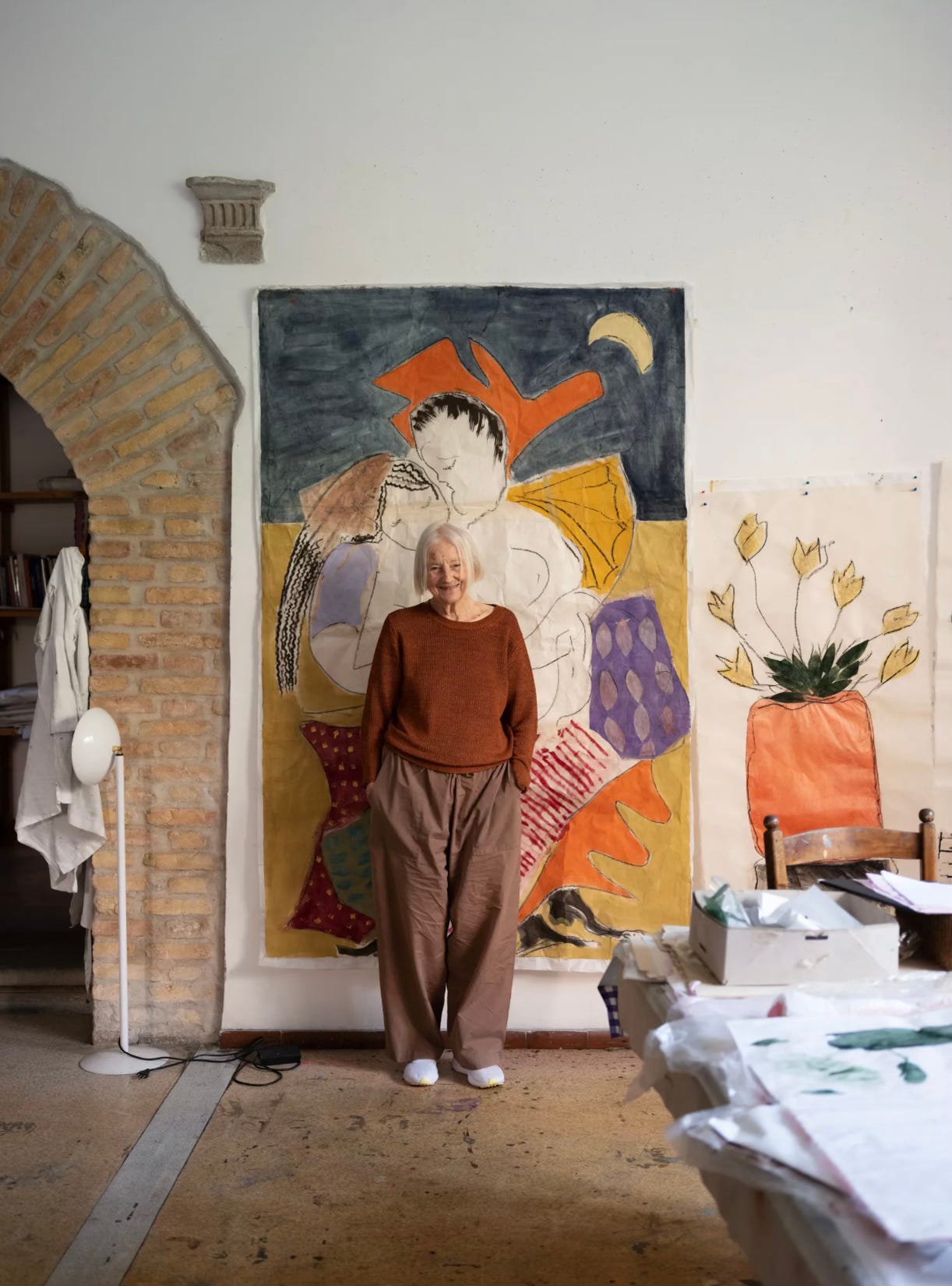
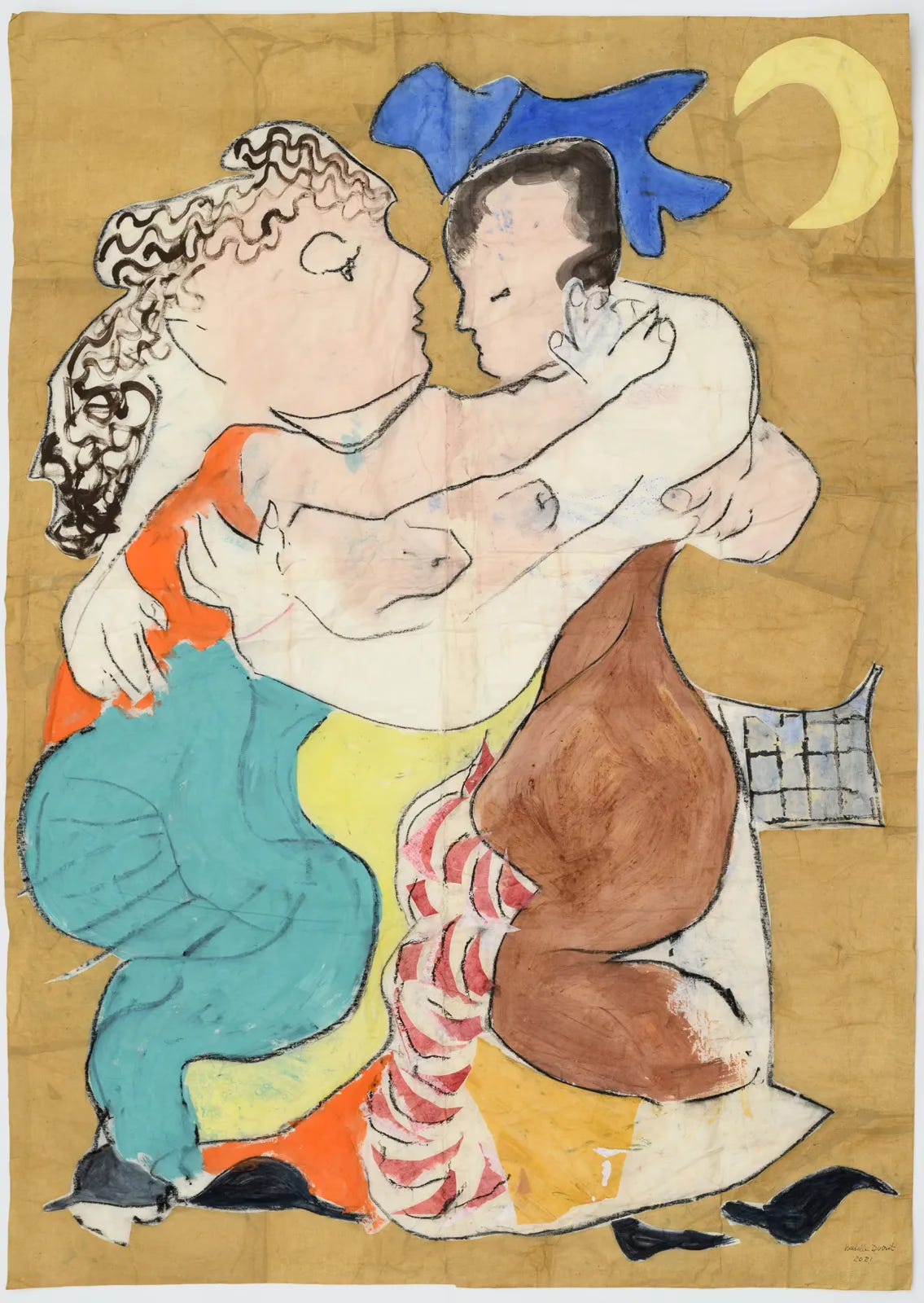

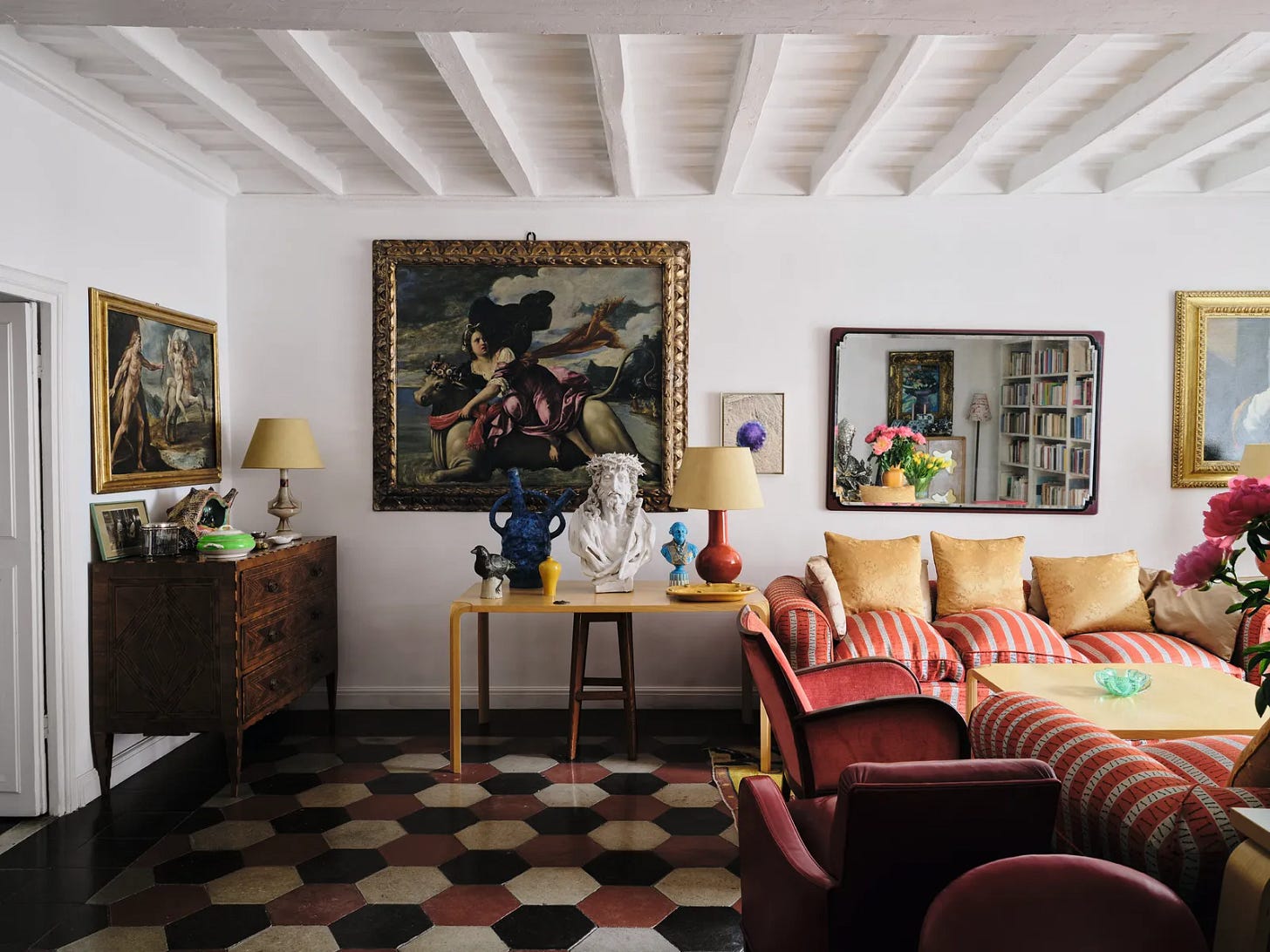





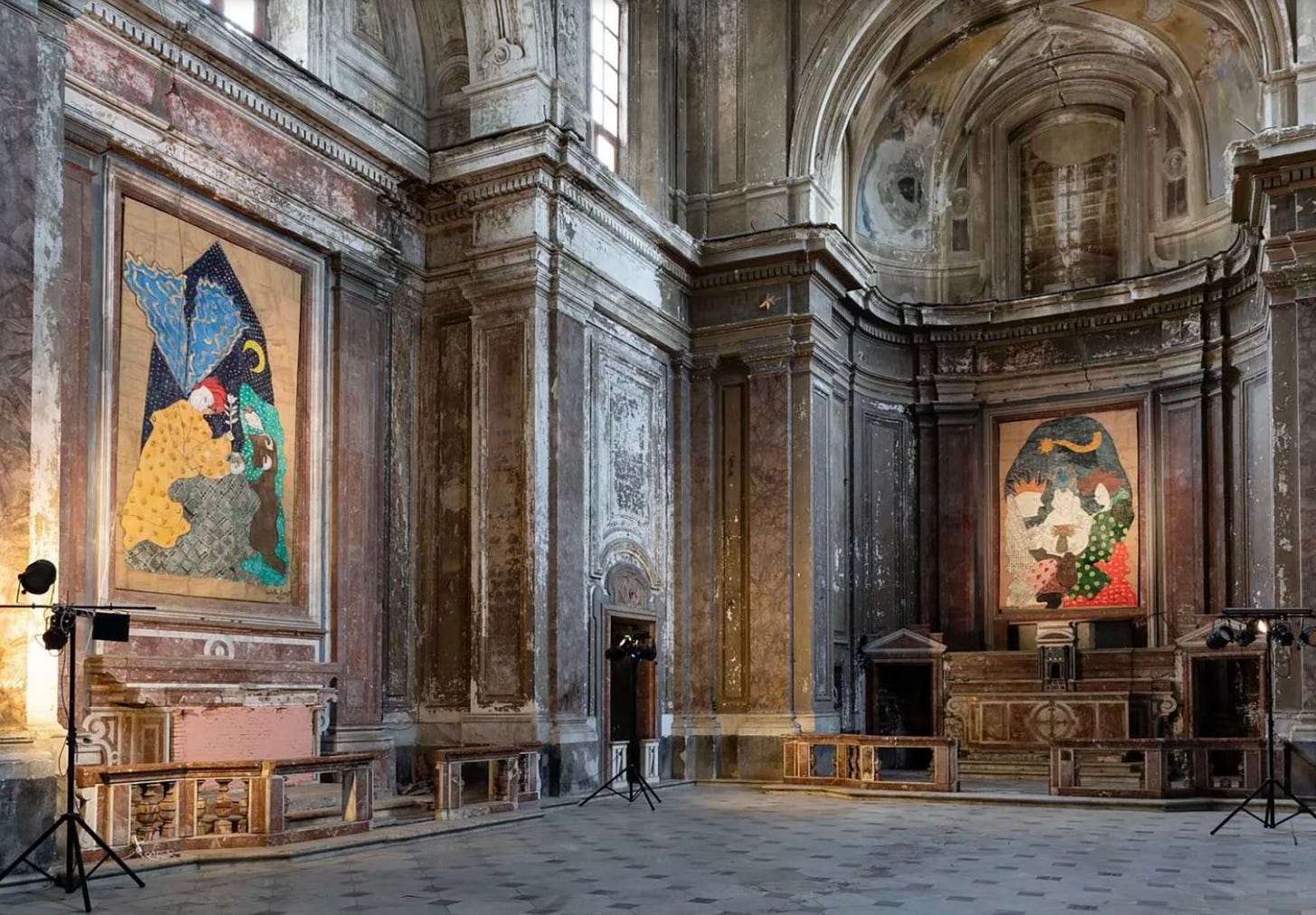


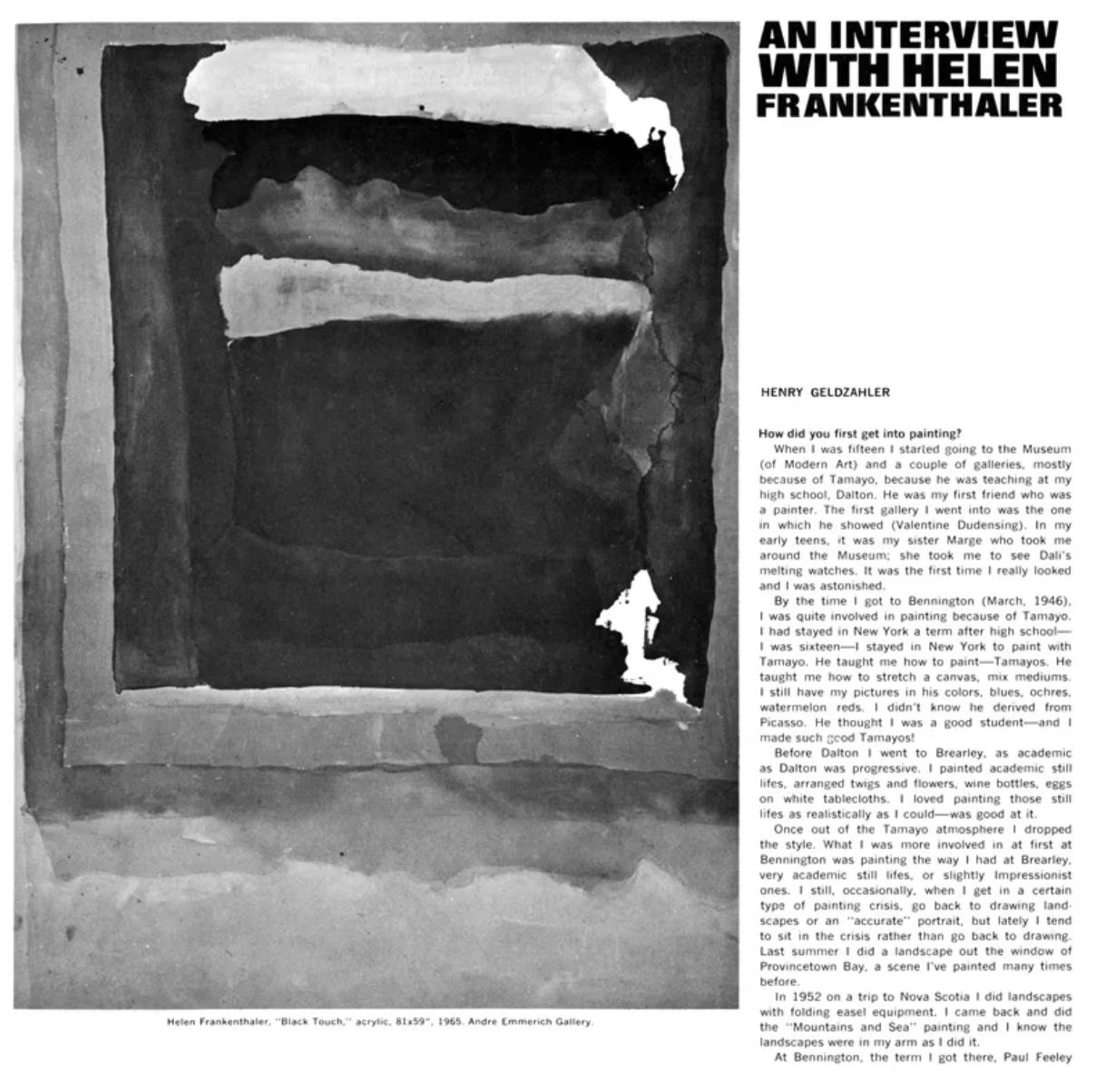
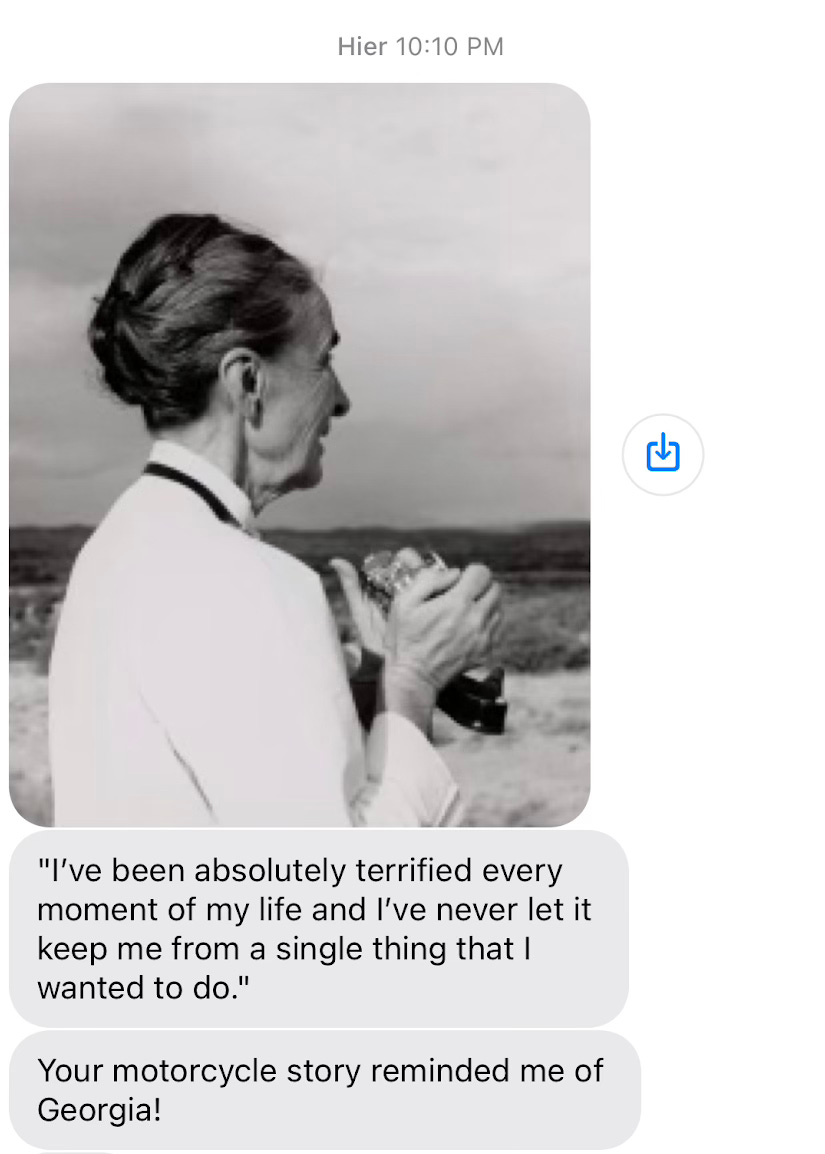
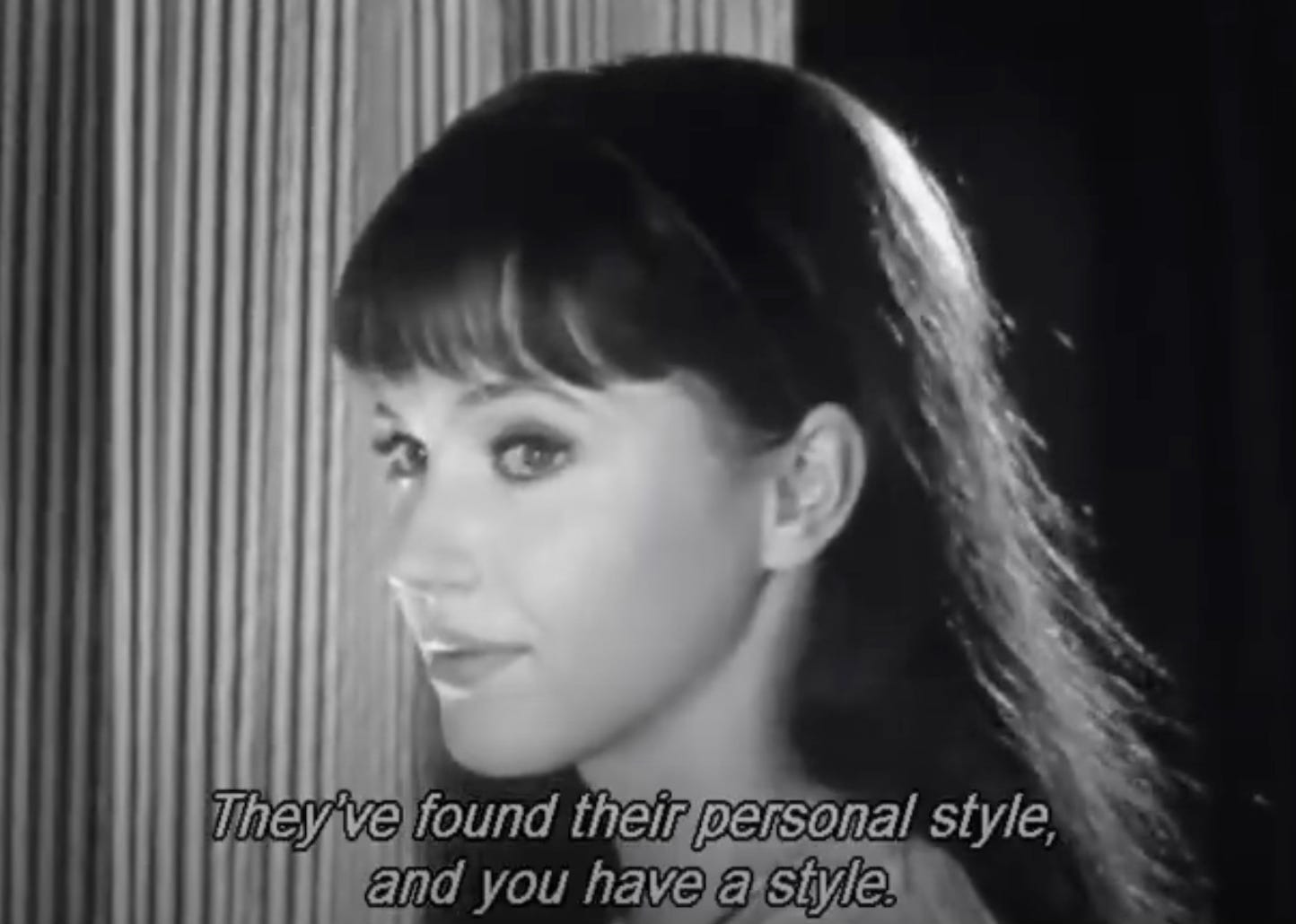

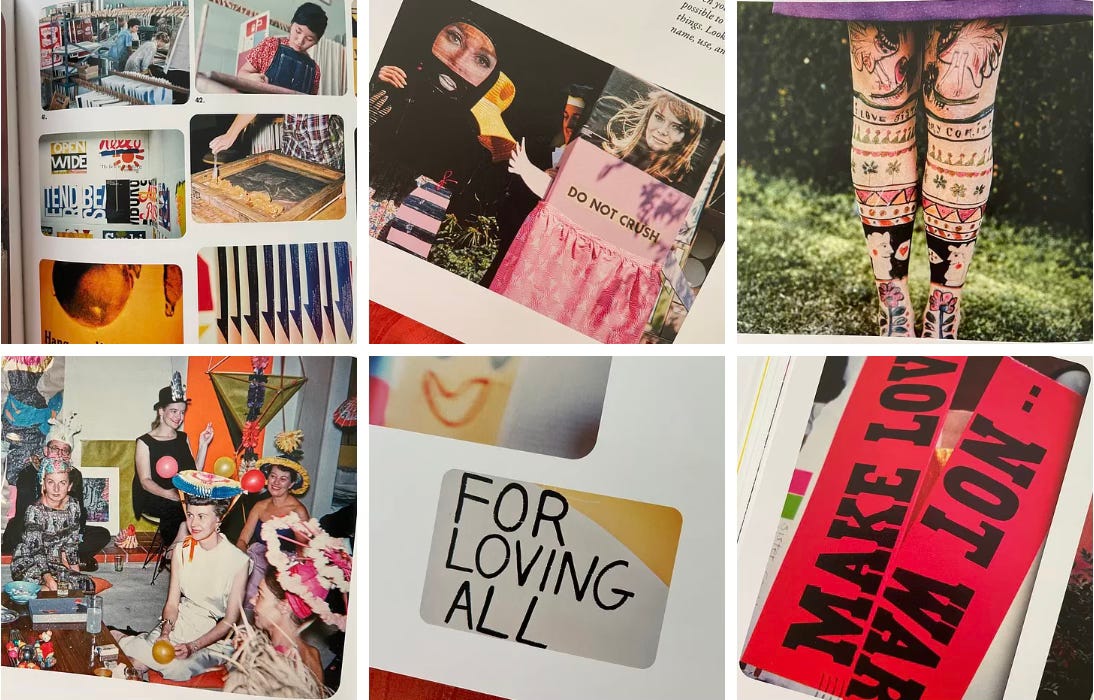
Enthralled with that Ducrot interview as well.
& this post is such a lovely curation of inspiration!
I live in Naples! I would love to visit her home ❤️